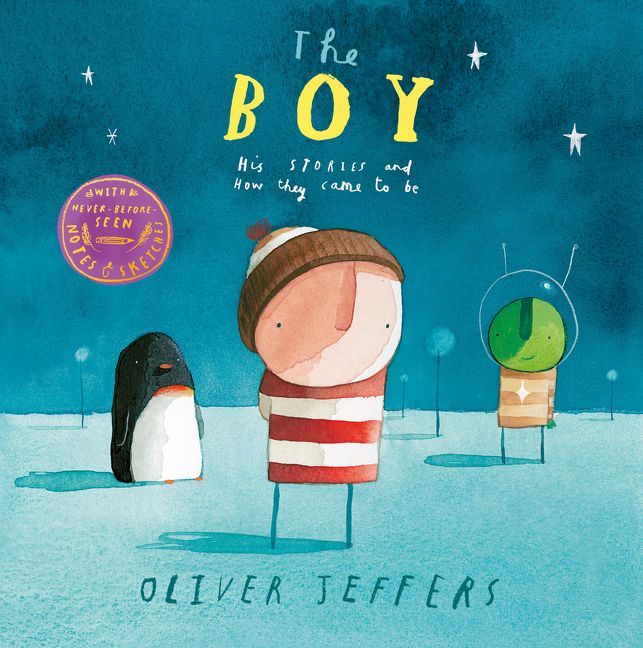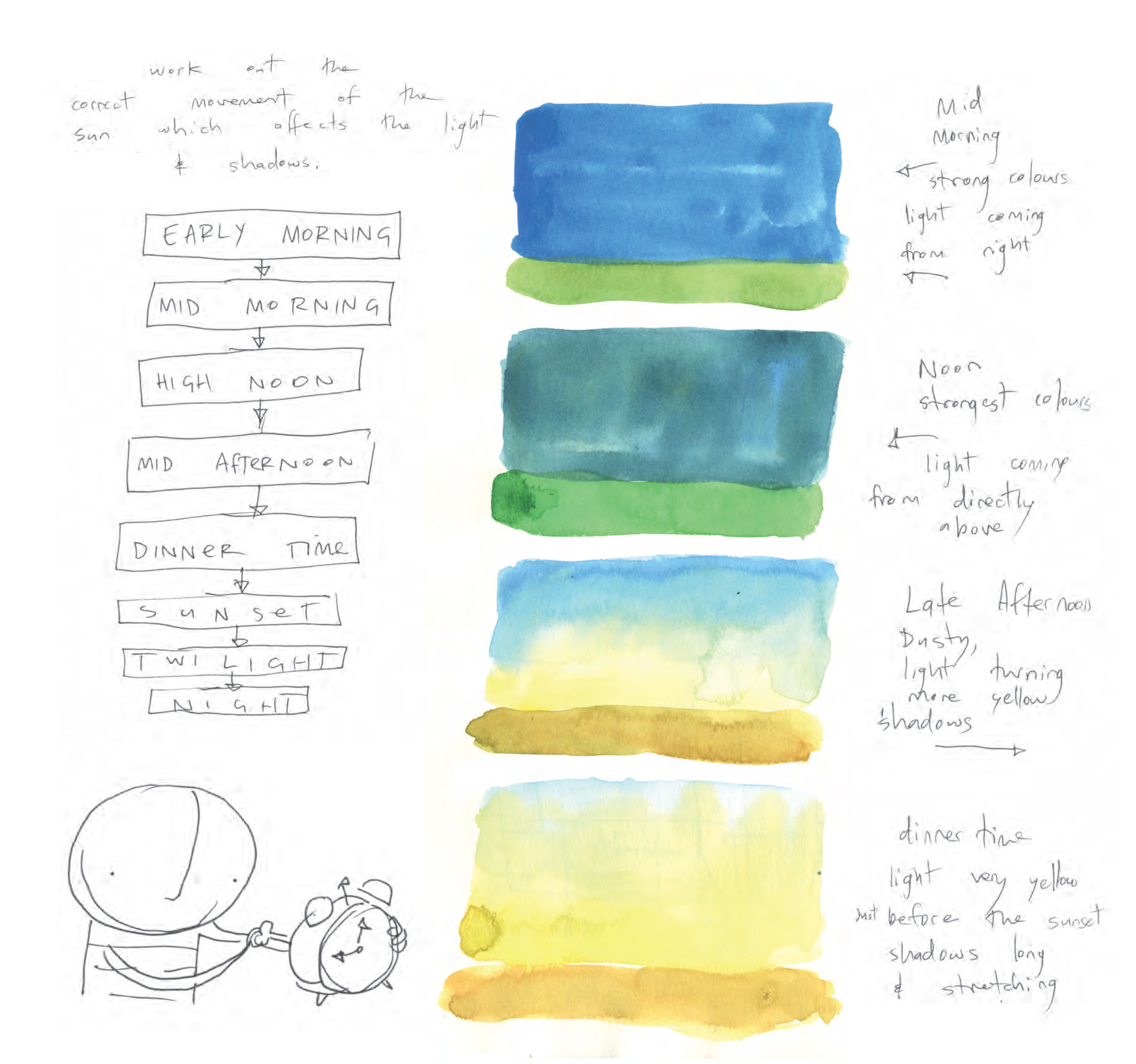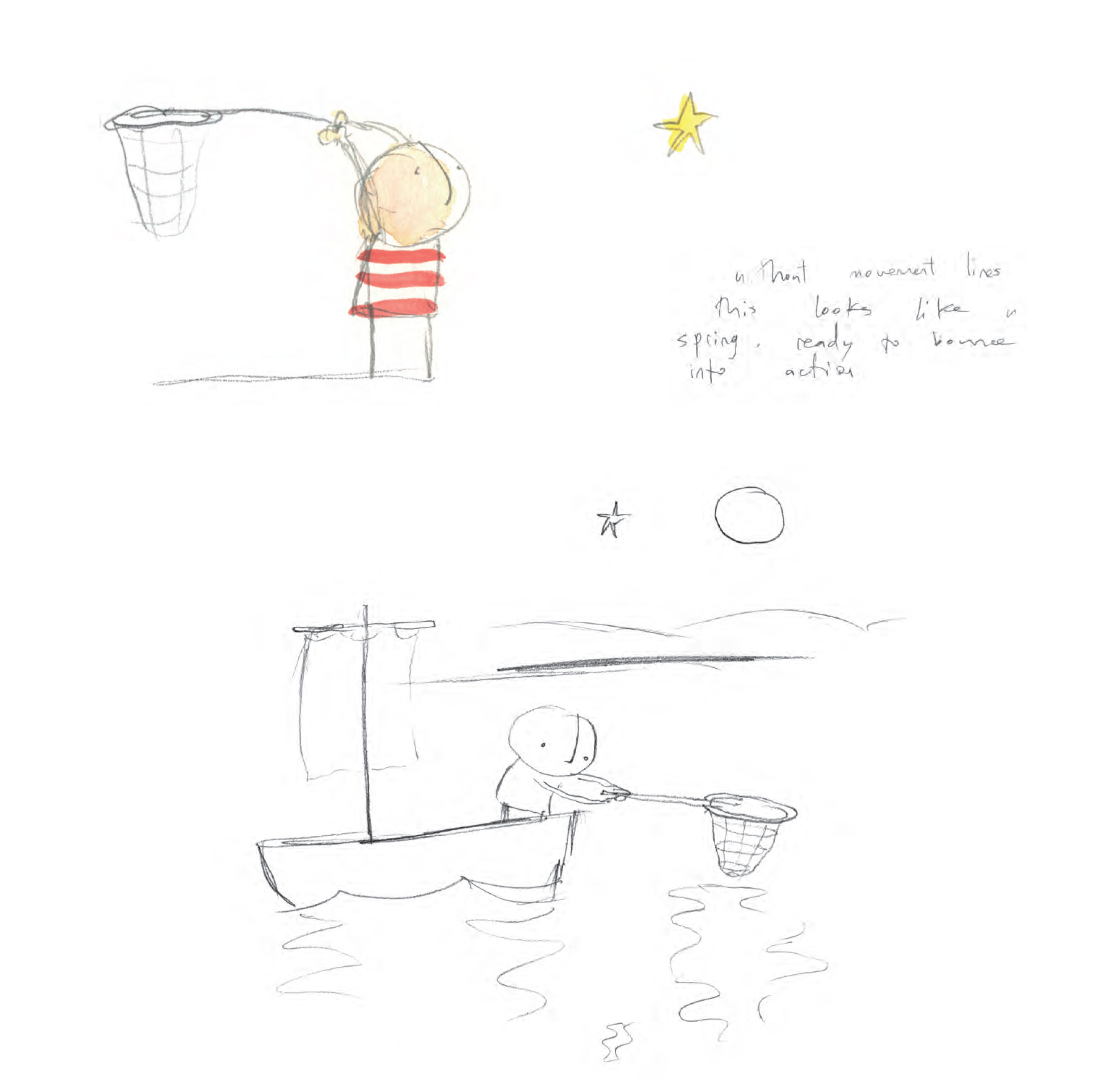The making of Oliver Jeffers' best-selling picture books
The best-selling author and artist reveals how his latest collection came to be.

Oliver Jeffers isn’t one for looking back. “Usually when I finish a project, I move on,” says the best-selling picture book artist and author. However, for his latest collection, The Boy: His Stories and How They Came To Be, Jeffers has brought together the four books in his Boy series along with work from old sketchbooks to show readers his journey as a maker.
Returning to a project can often lead to self-criticism, but for Jeffers delving into material from his archive was a joyful experience. “Whenever I go back and re-read my work it is with a sense of fresh eyes,” he explains. With his life having transformed dramatically since creating these books, including a move from his home in Belfast to Brooklyn and becoming a father, Jeffers' latest release also proved to be an immensely personal one.
“It was a little bit like a time machine,” he says, “because I remembered where I was when I was making some of those notes and what I was thinking and the things that were of interest to me. It really was like a little snapshot of time which was fascinating, and it was only at the end that I realised how far I’ve come since then.”
Raiding the archive
The artwork from his picture books also stood the test of time. “I think I just assumed that I’d keep getting better and better and keep refining my skill, but there was something about the original art that I worked on that was very different to how I work now,” he adds. “It was watercolours, and I’m surprised that it stood up so well.”
When it came to sharing concept drawings and layouts from his personal sketchbooks though, Jeffer’s admits that he took a little more convincing. Although fears that he would feel like a magician revealing their tricks were quickly dispelled. “I realised that there is no trick!”
“It was my brother’s idea,” he reveals. “He designs most of my picture books and he said it was a good idea. But once it was happening, once it was there, I was glad. I think people are appreciative of the fact that it’s out there. I’m glad that it’s happened. But yeah, I wasn’t a fan of the idea initially because it felt a bit like lifting the curtain and exposing yourself!”
Embracing digital tools
It’s been fourteen years since the first book in this collection, How To Catch A Star, was released, and in that time the industry and the ways in which artists work have changed a lot. Jeffers is no exception. While the original artwork for these books was scanned in by the publisher, his work since has made more use of digital tools.
Get the Creative Bloq Newsletter
Daily design news, reviews, how-tos and more, as picked by the editors.

“I realised that my art could be more refined using Photoshop CC,” he says. “I used it a little bit but then I rebelled. After that I’d started to notice trends and could see that everything was computer generated and quite controlled and I think a certain amount of charm was lost with that.
“But with my last book, Here We Are, the final layer of drawing was done on an iPad for practical reasons because I couldn’t spend all day every day in the studio. I’m always going back and forth though, I don’t want to be tied to a single discipline or way of making, and I realised that these tools are just another way of making. Photoshop is no different a material than oil paint or watercolours, it’s just another medium so I treated it like that.”
Digital tools might be more convenient when it comes to creating, but they haven’t rewired Jeffers' artistic outlook. “I think when it comes to making, technology doesn’t change the way you think but the way that you do it,” he says. “I try to not spend too much time on a computer, because for me a computer means email. But I’m using an iPad more and more for drawing and animation.”
Creating characters
His working methods aren’t the only way Jeffers has pushed back against trends and industry norms. With his debut How To Catch A Star, Jeffers achieved the dream of many an author and artist by releasing a picture book that he had both written and illustrated. Although at the time he didn’t realise that this was an unusual thing.

“When I came up with the story and created the art for what was effectively a finished book, I didn’t realise that that’s not the way it’s supposed to go,” he explains. With a completed book to his name, Jeffers then set about researching publishers who would suit his work and sent them a sample. “Fortunately people liked what they saw and immediately got back to me and wanted to go forward, so it was a relatively easy experience for me.”
Despite making the road to publication sound straightforward, Jeffers is all too aware that his story is an anomaly. He also stresses the importance of making a good impression when sending out samples of work.
People say don’t judge a book by a cover but that’s not true, we do that all the time
“I put a lot of care into the package of what I was submitting and publishers have said that nothing has really come in like that since,” he says.
“I think if you go the extra mile and put in the extra effort you will get noticed. People say don’t judge a book by a cover but that’s not true, we do that all the time.”
How To Catch A Star was the first in the series of Boy books. As the other books followed, the Boy and his friends, including a penguin and a Martian, would find a global audience. In the Boy collection, readers get to see how he started out as a deceptively simple drawing in Jeffers’ sketchbooks that was then reiterated and developed.

“It was almost a case of making the characters as simple as possible but then applying a realistic sense light and shadow off very very simple objects,” says Jeffers. “And I think the simplicity and lack of origin for any of the characters helped globally as well because all across the world people think the boy could be where they’re from. And that the geography of the place could be their place. Something I’ve realised since is that the more vague you are, the more people can apply themselves to the story.”
Changing audiences
Speaking of finding wider audiences, Jeffers’ has noticed that picture books have become much more fashionable since he started out twenty years ago. “I don’t think picture books numbers have improved necessarily but I think they’ve found a way into other genres,” he explains. “I think with Instagram and social media, I think all of these things mean that it’s a good time to be making picture books, there are a lot more eyeballs looking.”
And it isn’t just children who are taking notice of his picture books. “I call them picture books rather than children’s books because I’m noticing that adults like to read picture books on their own accord. I think that’s a good thing. I think once adults forgive themselves for reading them they’ll be surprised by the subtlety and find that the subject matters are universal.”
The Boy: His Stories And How They Came To Be is out now.
Related articles:

Thank you for reading 5 articles this month* Join now for unlimited access
Enjoy your first month for just £1 / $1 / €1
*Read 5 free articles per month without a subscription

Join now for unlimited access
Try first month for just £1 / $1 / €1

Dom Carter is a freelance writer who specialises in art and design. Formerly a staff writer for Creative Bloq, his work has also appeared on Creative Boom and in the pages of ImagineFX, Computer Arts, 3D World, and .net. He has been a D&AD New Blood judge, and has a particular interest in picture books.
